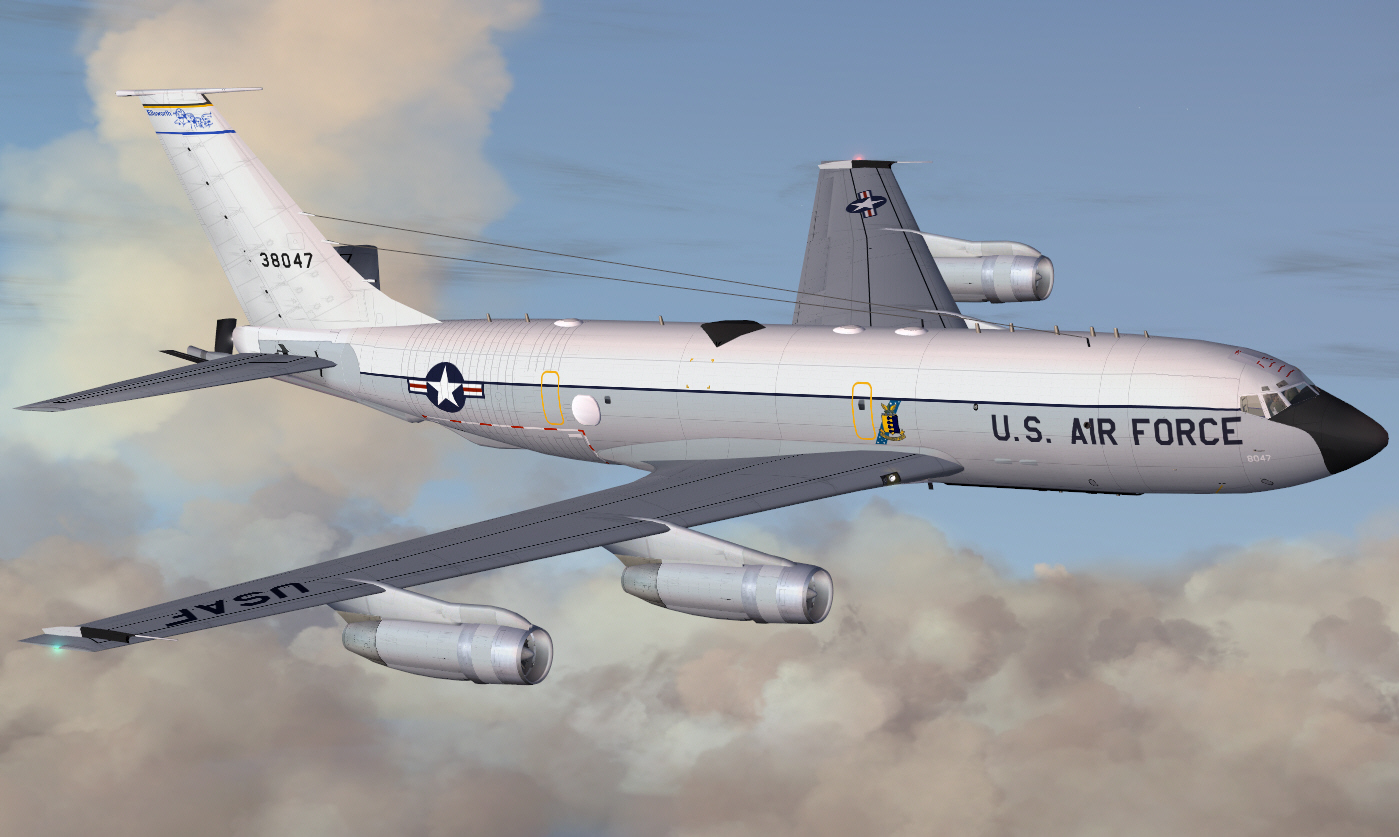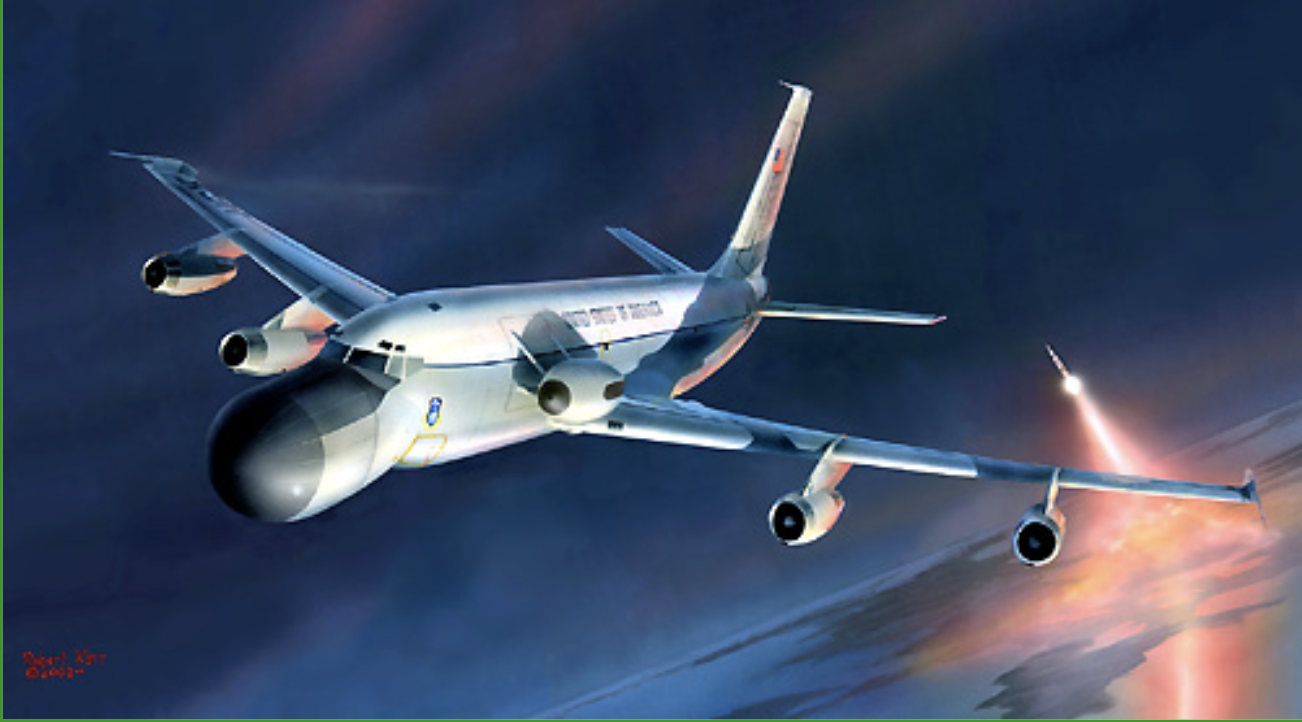Ec 135 Aircraft - And that's part of the equation that Eurocopter is betting will allow it to make a smooth transition from a leader in utility markets to the first choice in executive-configured helicopters as well. Especially if you need to land in a tight space or on the deck of a yacht, it's hard to argue there's any better choice.
Small and quiet suit many buyers just fine. When deciding whether to opt for an EC 135 opposed to a more traditional VIP transport, the tradeoffs really aren't as great as many buyers might think — and the money saved, indeed, is money earned.
Ec 135 Aircraft

Once people start to realize this, it's a good bet that the EC 135 will leap over other qualified candidates and land the corner office job it's seeking. That's when the real fun starts. When airborne, the battle staff, headed by a SAC general officer, monitors several communications systems and maintains contact with the SAC underground and alternate command posts, the national Military Command Centers, and the SAC alert forces.
Looking Glass
Climbing out from our starting point at the newly opened Kearny Heliport in New Jersey, Burchill headed for the Statue of Liberty before handing over the controls to me. As I negotiated the busy Hudson River corridor along Manhattan's western edge at about 700 feet, the helicopter was supremely stable, even given the bit of turbulence we were experiencing.
As we approached the George Washington Bridge, Burchill suggested I make a few turns to get a feel for the helicopter. I made a gentle bank to the left and another to the right. Still, the EC 135 has never really been thought of as an executive helicopter — at least not as its raison d'être.
Judging by its sleek, modern lines, which look especially great in an executive paint scheme, you might think otherwise — but you would probably never guess that the model traces its design heritage to the 1970s.
At that time, Aerospatiale and Messerschmitt-Bolkow-Blohm (MBB) were hard at work on a helicopter that would incorporate a compendium of advanced technologies in an aerodynamically streamlined package. Designers sought a modern continuation of the BO 105, which found great success in military and air medical services roles.

Advanced Range Instrumentation Aircraft
The result was the BO 108, a prototype helicopter that incorporated a bearingless main rotor, new engines, all new transmission and — for the first time ever in a helicopter — full-authority digital engine controls (fadec).
Aircraft 375 was one of the first Apollo Range Instrumentation Aircraft (ARIA) put into service. Aircraft 894 is one of two active ARIA with in flight refueling capabilities. This aircraft is a modified commercial Boeing 707, and is one of four ARIAs that have been upgraded with 4 MHz Racal Storehorse recorders and Microdyne S-Band, C-Band, P-Band Superheterodyne receivers.
With the formation of Eurocopter in 1992, the BO 108 design again underwent modifications and the name changed to EC 135. The fine-tuning that went into the design at this stage set the tone for what Eurocopter would strive to accomplish across its model range,
which today encompasses six civil helicopter lines, all of them new or newly upgraded in the last two decades. The product portfolio starts with the diminutive single-engine EC 120 introduced in 1998 and continues with the AS 350, EC 130, EC 145, EC 155 and, finally, the EC 225 Super Puma, the largest helicopter in the Eurocopter family with room for
up to 19 passengers and crew. (Two new models, code-named X3 and X4, are in the works — check out the June iPad edition or visit flyingmag.com for more on these projects.) Special missions aircraft. Special missions adaptations based on the C-135 airframe.
Originally developed as EC-135 command post for the B-52 nuclear bomber fleet. RC-135U, RC-135V Rivet Joint and RC-135W signals intelligence variants with automatic ELINT emitter locator system. RC-135V and RC-135W with nose featuring further sensor. TC-135W crew training version.

RC-135S Cobra Ball for ballistic missile launch detection. The US Air Force is re-engineering its RC-135s with CFM engines. Chances are you've heard a great deal about Eurocopter, even if you aren't intimately familiar with the company's history.
The manufacturer was formed in 1992 from the merger of the helicopter divisions of Aerospatiale in France and Daimler-Benz Aerospace in Germany. The new company was then folded into the global aerospace and defense giant EADS, where Eurocopter became a sister company of Airbus.
Eurocopter's main headquarters is in Marignane in the south of France just a short distance from Airbus in Toulouse. The executive teams of each manufacturer are completely separate, but a strong drive to succeed pervades at both companies.
So too does an intimate familiarity with the corporate and executive aviation markets. Airbus has gained a firm foothold in business aviation with its ACJ line of converted airliners. Eurocopter, meanwhile, has made private aviation a focus from the start.
On June 1, 1992, SAC was inactivated and replaced by the United States Strategic Command, which now controls the Looking Glass.[2][3] On October 1, 1998, the Navy's E-6 Mercury TACAMO replaced the USAF's EC-135C in the Looking Glass mission.
Number Built: The Air Force accepted a grand total of 820 C-135s type aircraft. The breakdown is as follows: 732 KC-135As, 30 C-135As, 15 C-135Bs, 4 RC-135As, 17 KC-135Bs, 10 RC-135Bs, and 12 C-135Fs for the French Air Force.
EC-135s Worldwide Airborne Command Post Sy stem (WWABNCP) variants, in 10 different configurations varying by communications equipment fitted; 39 aircraft representing 7 versions made up the EC-135 family. Also some KC-135As were converted to RC-135s aircraft such as RC-135Ds, and RC-135T.
C-135Bs were converted into RC-135Es, RC-135Ss and RC-135Ms which were later converted to RC-135Ws. During the early 1960s, NASA and the Department of Defense (DoD) needed a very mobile tracking and telemetry platform to support the Apollo space program and other unmanned space flight operations.
In a joint project, NASA and the DoD contracted with the McDonnell Douglas and the Bendix Corporations to modify eight Boeing C-135 Stratolifter cargo aircraft into Apollo / Range Instrumentation Aircraft (A/RIA). Equipped with a steerable seven-foot antenna dish in its distinctive "Droop Snoot" or "Snoopy Nose", the EC-135N A/RIA became operational in January 1968, and was often known as the Jimmy Durante of the Air Force.
The Air Force Eastern Test Range at Patrick AFB, Florida, maintained and operated the A/RIA until the end of the Apollo program in 1972, when the USAF renamed it the Advanced Range Instrumentation Aircraft (ARIA). Since Eurocopter's formation 20 years ago from the merger of helicopter producers in France and Germany, the company has steadily increased its market share, capturing and holding onto the coveted spot as the world's largest civil helicopter maker.
One product above all others deserves the credit for initiating this rise to prominence: the EC 135. Even Eurocopter admits it never would have reached such lofty heights so quickly were it not for the success of this model, long the industry's best-selling light twin.
-engine helicopter and a machine that seems to excel at every mission it is pressed to perform. The Boeing EC-135 Looking Glass aircraft is a conversion of the basic C-135/KC-135 family of aircraft for the strategic command and control mission.

This airborne command post function provides a survivable means of command and control in the event that the SAC underground command center, alternate command posts, or ground-based communications are lost. It also provides an alternate method to launch the Minuteman/Peacekeeper missiles if ground launch control centers are destroyed.
Transferred to the 4950th Test Wing at Wright-Patterson AFB, Ohio, in December 1975 as part of an overall consolidation of large test and evaluation aircraft, the ARIA fleet underwent numerous conversions - including a re-engineering that changed the EC-135N to the
EC-135E. In 1994, the ARIA fleet relocated to Edwards AFB, California, as part of the 412th Test Wing. However, tasks for the ARIA dwindled because of high costs and improved satellite technology, and the USAF transferred the aircraft to other programs such as J-STARS.
The U.S. Nuclear strategy depends on its ability to command, control, and communicate with its nuclear forces under all conditions. An essential element of that ability is Looking Glass; its crew and staff ensure there is always an aircraft ready to direct bombers and missiles from the air should ground-based command centers be destroyed or rendered inoperable.
Looking Glass is intended to guarantee that U.S. Strategic forces will act only in the manner dictated by the President. It took the nickname "Looking Glass" because the mission mirrored ground-based command, control, and communications. Besides being the program name, "Looking Glass" is the official name for the "C" model aircraft of the EC-135.
It has a crew of at least 15, including at least one or more general officers. The Boeing EC-135 was a command and control version of the C-135 Stratolifter. Modified for Operation Looking Glass mission, during the Cold War, EC-135 were airborne 24 hours a day to serve as flying command platforms for the military in the event of nuclear war.

EC-135N served as tracking aircraft for the Apollo space program. At the start of the flight test program in the mid-1980s, the BO 108 was intended merely as a technology platform to investigate advanced systems. No one was sure whether the model would actually make it into production.
By the early 1990s, after designers had spent considerable effort maximizing the interior space of the helicopter and incorporating advanced rigid rotor technology, a newly redesigned fenestron tail, anti-resonance isolation systems and composite main structures, momentum for a full certification test program began to
coalesce around what many within Aerospatiale recognized could be a world-beating helicopter. Next I made a 180 to the south, heading back along the other side of the river. Again, my turn was benign, although a bit steeper than the ones before.
Flying in the EC 135 was a blast, and all I could think of as we cut past the megalithic New York City skyline off our left side and headed back for Kearny was how lucky guys like Dave Burchill are.
Nightwatch was initiated in the mid-1960s utilizing the three EC-135J aircraft, modified from KC-135Bs, as command post aircraft. The three Nightwatch aircraft were ready to fly the President and the National Command Authority (NCA) out of Washington in the event of a nuclear attack.
The E-4 aircraft (a modified Boeing 747-200) came on line with the Nightwatch program in 1974 replacing the EC-135s on this mission.[4] With a smooth but quick motion, he cranked the helicopter over to the left — the horizon was suddenly tilted at a sharp angle.
Just as briskly, Burchill hauled the EC 135 to the right and into a hard bank the other way. The Advanced Range Instrumentation Aircraft are EC-135Bs modified C-135B cargo aircraft and EC-18B (former American Airlines 707-320) passenger aircraft that provided tracking and telemetry information to support the US space program in the late 1960s and early 1970s.
eurocopter ec 135, ec 135 aircraft pictures, ec 135 helicopter, ec 135 aria, ec 135 looking glass, boeing ec 135 looking glass, ec 135 cockpit, boeing ec 135